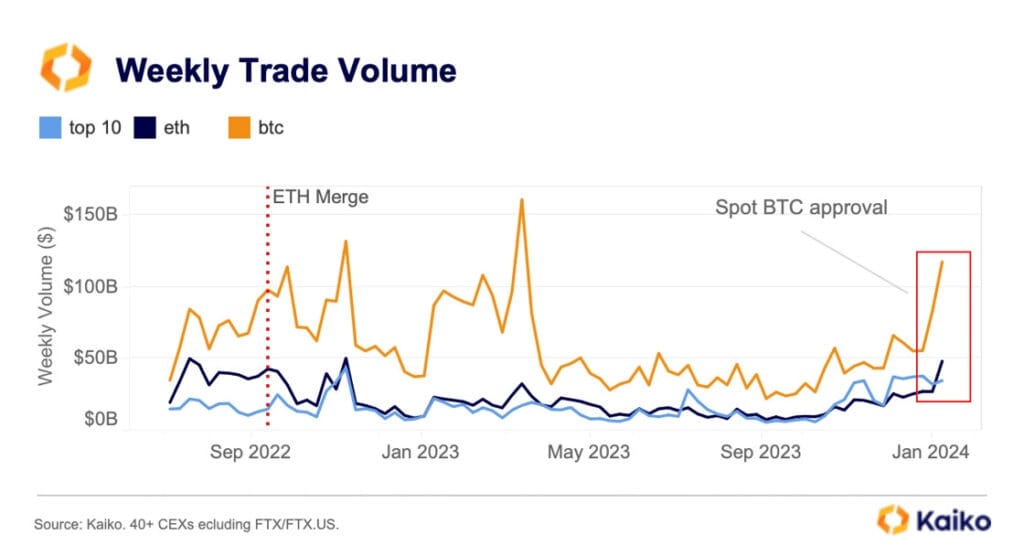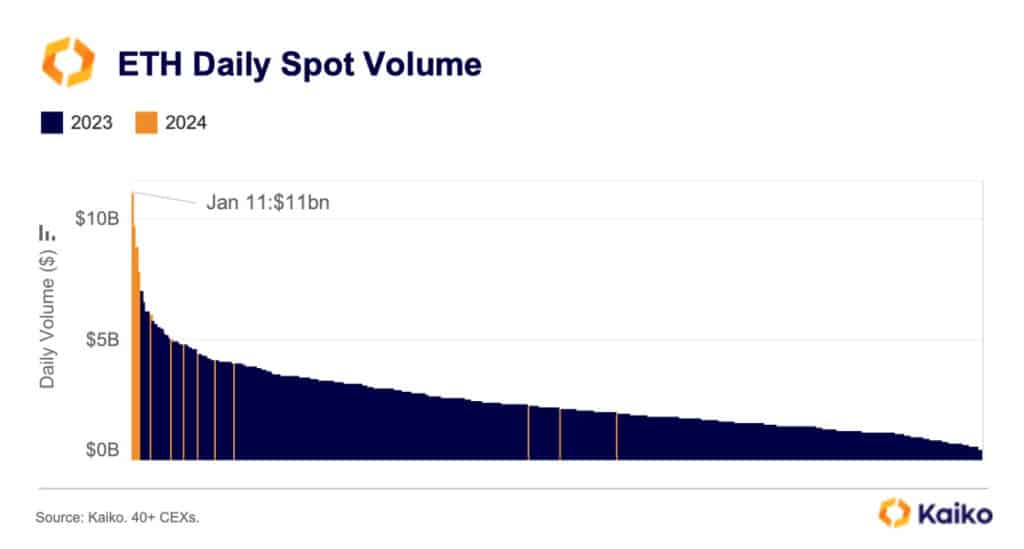The long-standing correlation between Bitcoin (BTC) and Ethereum (ETH) has dropped below its historical average of 0.71 for the first time since 2021. This divergence comes as BTC celebrates 100% returns over the past year, significantly outpacing ETH’s more modest 60% returns. The pivotal moment coincided with the introduction of Bitcoin spot exchange-traded funds (ETFs), sparking speculation about whether ETH can follow suit and experience a similar surge.
Exploring Ethereum’s Market Dynamics Post-BTC Approval
A recent Kaiko report delves into Ethereum’s current dynamics, closely examining trading volumes and derivatives performance in the aftermath of BTC ETFs going live. Despite ETH’s rally in spot trading volume, the derivatives markets have not shown the characteristic signs of traders positioning for an impending surge, leaving the market uncertain about the cryptocurrency’s trajectory.

Since the Merge, Ethereum has encountered a series of narratives, from deflation and ultrasound money to Layer 2 solutions and liquid staking derivatives. The recent focus, however, has shifted towards ETFs, with anticipation building as the decision date looms in May. This Deep Dive explores whether an approved spot ETF could generate the same excitement that fueled BTC’s historic rally.
Comparisons with BTC’s trading trends leading to its ETF approval reveal interesting insights. ETH beta tokens, representing assets related to ETH with higher volatility, were favored by investors prior to the BTC approvals. However, post-approval, ETH outperformed, raising questions about the potential impact of spot ETFs on the market dynamics.
ETH’s spot volume on centralized exchanges (CEXs) witnessed a notable spike, reaching levels not seen since the FTX collapse. Furthermore, last week marked the three highest ETH spot volume days since the beginning of 2023, indicating heightened interest and activity. Derivatives data, however, suggests that recent ETH movements are predominantly driven by spot trading, with limited signs of aggressive speculation on ETF applications.

The report also highlights the historical performance of ETH futures ETFs, which have struggled to gain traction. Despite the anticipation surrounding ETH ETF applications, trading volumes for these products remain underwhelming. The slow growth is attributed, in part, to the opportunity cost for investors, who forego potential staking yields while incurring expenses.
Related Reading | Bitcoin’s Bleeding: 11% Plunge Erases New Year Gains, Dips Toward $40k Zone

